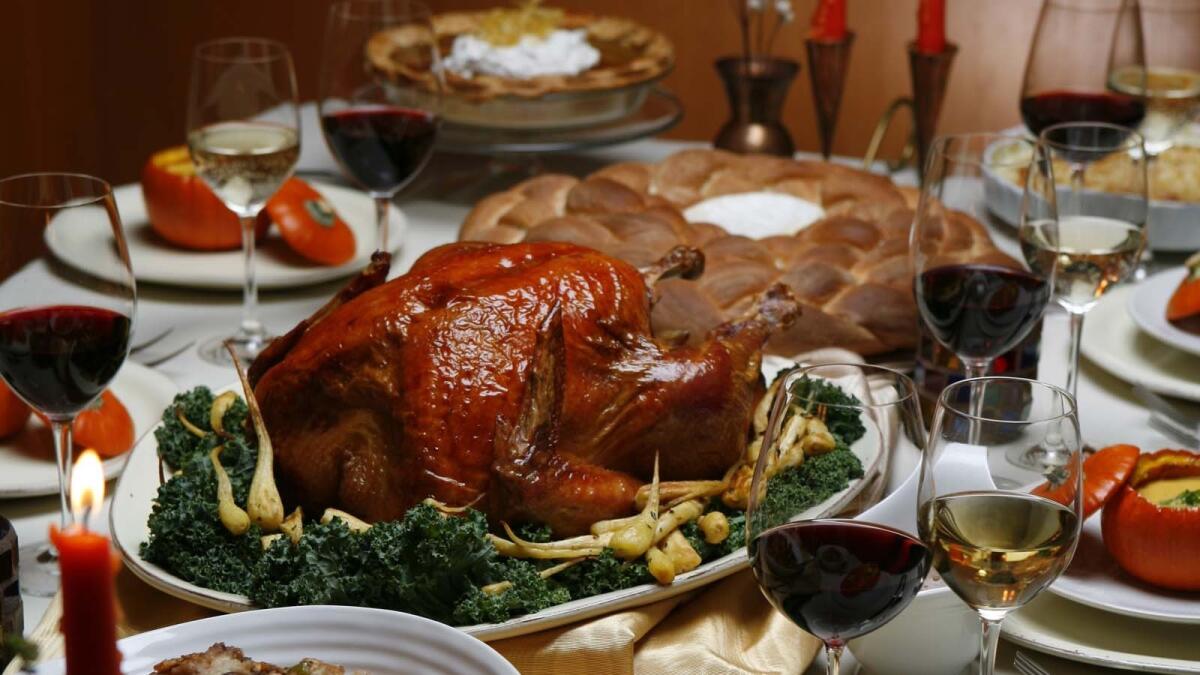Your Thanksgiving dinner is cheaper this year. Here’s why

- Share via
The cost to feed 10 Thanksgiving guests fell 75 cents this year, to $49.12 — the lowest price in five years, according to the American Farm Bureau Federation.
Eggs, milk, butter and other ingredients also are cheaper, mostly because production is high. “In addition, grocers often use milk as a loss leader to entice consumers to shop at their stores,” said John Newton, the Farm Bureau’s director of market intelligence.
Why are retail turkey prices falling?
U.S. poultry companies are churning out the same amount of turkey — nearly 6 billion pounds, most years — even though they don’t export as much as they did three years ago. That leaves more turkey on the domestic market.
Yep. Expect to fork out a tad more for your pumpkin pie and stuffing. A 30-ounce can of pumpkin pie mix will set you back $3.21, up 8 cents over last year. And a half-pint of whipping cream costs $2.08, up from $2 last year.
“Whole whipping cream is up about 4% in price due to increased consumer demand for full-fat dairy products,” Newton said.
A 14-ounce package of cubed bread stuffing also saw a modest hike: up 14 cents to $2.81. Fresh cranberry prices also rose: $2.43 for a 12-ounce bag, up 4 cents.
Are other countries not buying our turkey?
Yes, but not as much. The dollar is strong, and that dampens all exports. Plus, the 2015 avian flu outbreak shut U.S. birds out of some markets, such as China, which at the time was the second biggest buyer of U.S. turkey meat, behind Mexico. Canada is the third biggest market for U.S. turkey.
Thank you, merci and gracias
We probably owe some thanks to the North American Free Trade Agreement, which sets strict rules on how to impose health and sanitary trade barriers.
Mexico and Canada banned birds from outbreak states such as Minnesota, the biggest producer of turkeys, but allowed them from North Carolina or California, for example.
“Due to NAFTA, the drop in exports was not as bad as it could have been because NAFTA allows regionalization,” said Metin Cakir, an economist who studies agricultural issues at the University of Minnesota.
We have no trade agreement with China, which has yet to lift its ban, despite the end of the avian flu outbreak. A group of 14 U.S. senators from poultry-producing states has urged the Trump administration to keep pressure on China to reopen its markets.
More to Read
Inside the business of entertainment
The Wide Shot brings you news, analysis and insights on everything from streaming wars to production — and what it all means for the future.
You may occasionally receive promotional content from the Los Angeles Times.











